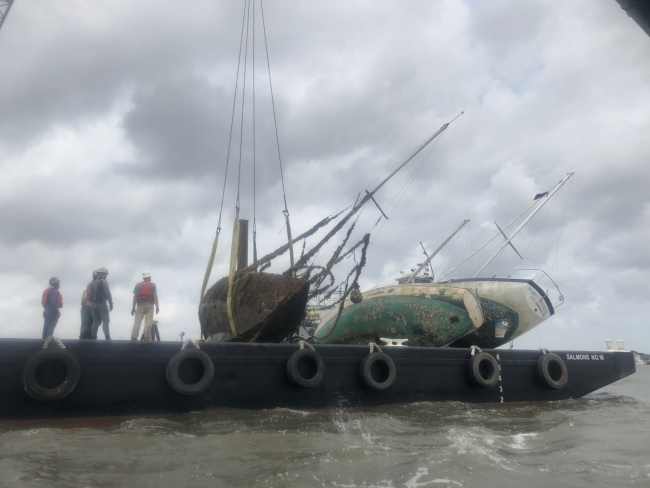The 2017 hurricane season was one of the most active with 17 named storms; 10 of those became major hurricanes. Three devastating hurricanes made landfall, one of which was Hurricane Irma. Irma was the strongest hurricane ever observed in the open Atlantic Ocean and caused widespread devastation in the Caribbean, Florida, and the Southeastern United States, including South Carolina. As a result, Hurricane Irma ranked in the top five costliest hurricanes in U.S. history at $50 billion.
Despite being downgraded from a hurricane, Tropical Storm Irma still dealt a glancing blow to the Lowcountry. Many communities were impacted by extreme high water levels and sustained heavy wave action. In the Charleston Harbor, water levels were the third highest ever recorded, 9.9 feet above mean lower low water (the average of the daily lowest, low tides), which caused extensive flooding and a concentration of derelict vessels and debris in Charleston County.
With financial support through the Bipartisan Budget Act of 2018, the South Carolina Department of Health and Environmental Control (SCDHEC) was awarded $174,220 through a NOAA Marine Debris Program supplemental grant to aid in marine debris cleanup efforts. SCDHEC worked collaboratively with the City of Charleston, Charleston City Marina, and the City of Folly Beach to target derelict vessels, construction materials, and floating docks that remained submerged or lodged in coastal marshlands near the City of Charleston and the City of Folly Beach. Additionally, the City of Folly Beach and the Charleston City Marina contributed a funding match of $27,000.
This debris in the coastal zone posed hazards to navigation, commercial fishing grounds, and damaged sensitive ecosystems such as marsh grass and oyster beds. SCDHEC worked with contractors and removed thirteen derelict vessels, together weighing about 144,000 pounds! This important removal work will allow the marshlands to regrow vegetation critical for habitat and coastal protection, especially during hurricane season.
We are thankful the coast will be a bit cleaner as a result of this collaborative effort. To learn about how you can help prevent your property from becoming marine debris during a storm, check out our storm preparedness fact sheet.


